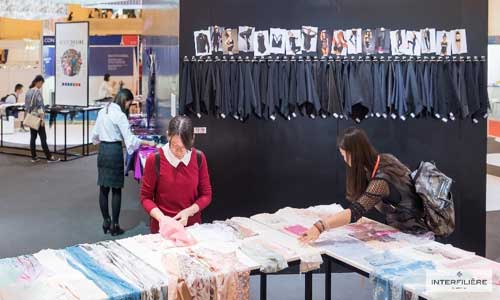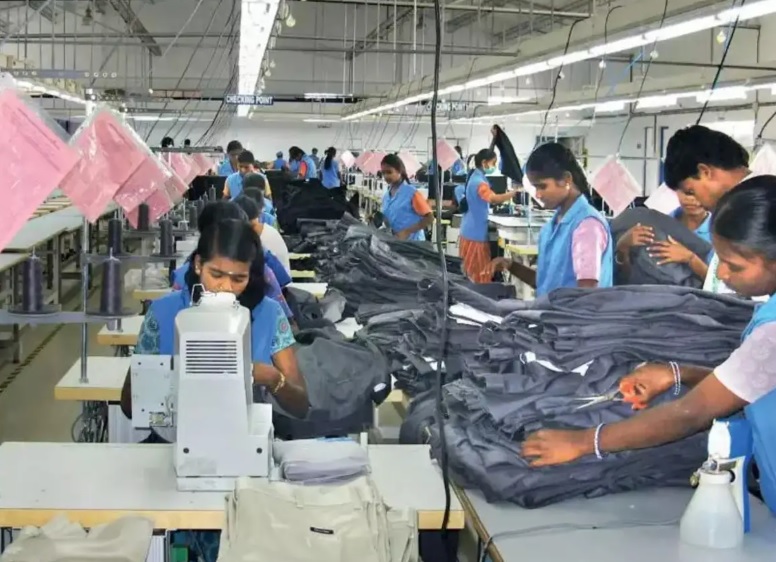FW
Textile companies in Zimbabwe don’t have the foreign currency for importing raw materials. The country is facing a serious shortage of forex. US dollars are being sold in the black market at exorbitant rates. Textile production has been greatly affected. Units can’t access forex needed for importing vital raw materials such as yarn, dyes and chemicals.
Thousands of employees are likely to be affected if things remain the same. The apparel sector in Zimbabwe currently operates at less than 30 per cent of its capacity. The industry that once used to employ over 40,000 people now employs only 8,000 workers.
Zimbabwe is flooded with cheap textile and apparel imports from Asian countries, especially from China. These low-priced textile and apparel imports have had a negative impact on the manufacturing sector in Zimbabwe. Textile and apparel manufacturers want a ban on imports of cheap polyester knitted fabric and finished blankets.
Other problems plaguing the industry in Zimbabwe are poor performance, low productivity, out of date technology, and lack of investment and government support. Production of cotton had significantly declined in recent years owing to the high cost of production and unending fights over pricing between farmers and merchants.
H&M’s net profit for Q3 dropped by 20 per cent. Sales grew 4.6 per cent. Its online sales continued to develop well. However, its growing online sales did not fully compensate for reduced footfall to stores in several of its established markets, which has resulted in H&M’s total sales development not reaching targets so far this year.
This meant that H&M entered the third quarter with an inventory level that was too high. An aggressive summer sale policy brought stocks down, and the autumn collection got off to a good start but sales slowed towards the end of September. The group’s online sales currently represent up to 30 per cent in some of H&M’s established markets. Online sales are expected to rise by at least 25 per cent per year in the future.
The competitive landscape is being redrawn, new players are coming in and customers’ behavior and expectations are changing, with an ever greater share of sales taking place online. Meanwhile, the Swedish fast fashion retailer is continuing to invest in bricks-and-mortar operations, having opened its first physical stores in Kazakhstan, Colombia, Iceland and Vietnam, with its first Georgia outlet coming later in the year.
Andhra Pradesh will inspect fields planted with an unapproved variety of genetically modified seeds developed by Monsanto. Farmers have already planted 15 per cent of the cotton area in the state with Bollgard II Roundup Ready Flex (RRF).
Bollgard II RRF is a proprietary technology owned by Monsanto, the world’s biggest seed maker. Bollgard II RRF is known for its herbicide-tolerant properties. Monsanto last year withdrew its application seeking approval from the regulator, Genetic Engineering Appraisal Committee, for this variety. When the US company withdrew the application last year, it was in the final stages of a lengthy process that included years of field trials.
There’s a fear that some seed companies, while suppressing their real intent of profiteering, are attempting to illegally incorporate unauthorised and unapproved herbicide-tolerant technologies into their seeds. The illegal sale of seeds violates India’s environmental protection rules. It’s estimated that 3.5 million packets of such seeds were sold this season. Gross misuse of patented and regulated technologies may pose numerous challenges to India's cotton ecosystem.
New Delhi approved the first GM cotton seed trait in 2003 and an upgraded variety in 2006, helping transform India into the world’s top producer and second-largest exporter of the fiber.
The Confederation of Indian Textile Industry (CITI) has welcomed the reduction of GST rates for manmade fiber yarns and its products from 18 per cent to 12 per cent. CITI feels this will help strengthen the entire textile value chain and make the Indian textile industry globally more competitive. It has sorted out a big issue of inverted duty for manmade fiber products as it was causing a serious escalation of the cost of synthetic products, which was further leading to cheaper imports from competing countries like China and Indonesia.
As of now, there is no refund of input tax credit at the fabric stage and under the GST regime, with the abolition of 12.5 per cent countervailing duty and four per cent special additional duty, imports have become a much cheaper option than sourcing fabrics from the domestic market. CITI is the apex industry chamber of the textile and clothing industry of India.
Reduced GST rates are expected to benefit not only the spinning and powerloom sectors but also support the initiative of Make In India and achieve the national objective of creating more employment opportunities. CITI hopes that the accumulated input tax credit will be refunded at the fabric stage especially for processed fabrics.

Interfiliere Shanghai will take place on October 10 to 11, 2017.
With an impressive selection of body wear industry specialists attending as exhibitors, the show provides offerings from fabrics, accessories, laces, OEM/ODM, embroideries, machineries and textiles.

Trend forums have always been signatures of all Interfilière shows, giving concise and inspiring insights into trends. The show will take the first look at spring/summer 2019 trends, showcasing a selection of innovations, fabric samples, accessories and colors reflecting trends curated by Concepts Paris. The forums will focus on lingerie, swimwear and sports/athleisure.
Interfilière Shanghai, in partnership with Concepts Paris, will present a live prototype presentation to inspire visitors and promote new industry codes with original combinations of fabrics and exceptional techniques. Live commentaries explaining the technical specifics of each creation will be given.
With its successful debut at Interfiliere Hong Kong in March 2017, the Studio will arrive at this Shanghai edition for the very first time. An undisclosed room, ideal for exhibitors to introduce the launch of a new product, solution or innovation to 40 targeted guests.
The show offers a unique rendezvous between China, the leading textile manufacturing country, and the rest of the world. There will be analyses of consumer expectations and the constantly changing market driven by innovation and performance.
E-tail luxury marketplace Farfetch is the UK's fastest growing retailer. While Farfetch is the UK’s fastest growing retailer, Primark enjoys the biggest revenue uplift. Farfetch had 70 per cent growth last year. Second place on the percentage growth list went to The Hut Group with 50 per cent growth.
Joint third place went to JD Sports and Wren Kitchens with a 31 per cent revenue rise each, while a trio of expanding names, Asos, Well Pharnacy and toy chain Smyths, each enjoyed a 28 per cent surge. The remaining names in the top 10 were Superdry and Screwfix with 27 per cent growth, and discount giant B&M on 25 per cent.
But some of these firms were boosted by acquisitions or are smaller so their percentage growth figures might not translate into such big numbers compared to other names not on the list. From the viewpoint of how much growth companies saw in absolute terms, Primark tops the list. It’s followed by JD Sports. Farfetch only came sixth here. Burberry comes in fourth ahead of TK Maxx, Screwfix and Morrisons. Globally, Amazon topped the ranking. That was more than the next four on the list. It was followed at number two by JD (big rival Alibaba was tenth).
Even though India is looking at a bumper cotton crop, prices are expected to remain above minimum support levels till December, except in Telangana. India’s cotton production in 2017-18 is expected to be 375 lakh bales. Presently, cotton price of the fair and average quality is above minimum support price. But private procurement currently on in Telangana is below minimum support price. Prices are low because the crop has more moisture due to the recent rainfall and traders expect better quality and increased arrivals post Diwali.
Even if the Cotton Corporation of India does minimum support price procurement operations, they may not be significant. If production has increased, consumption is also likely to increase. The number of spindles is increasing in Gujarat due to the incentives extended by the state government. Cotton arrivals started in Gujarat and Maharashtra 20 days ago. Cotton prices in Maharashtra are expected to remain higher than minimum support price at least till December.
Irrespective of market prices, though, yarn manufacturers have requested CCI to procure 30 to 40 lakh bales of cotton to help the industry during the lean period. However, CCI is clear on commercial procurement of cotton only if it does not get enough cotton through its minimum support price operations.
"The latest sustainability data predicts that by 2030, the industry’s water consumption will grow by 50 per cent to 118 billion cubic metres carbon footprint will increase to 2,791 tons; the amount of waste it creates will hit 148 tons. While significant efforts are being made by leading apparel companies, they don’t seem to be making much of a change at least just yet. The reason behind this is the insatiable appetite for fashion where people are buying more and more clothes."

The latest sustainability data predicts that by 2030, the industry’s water consumption will grow by 50 per cent to 118 billion cubic metres carbon footprint will increase to 2,791 tons; the amount of waste it creates will hit 148 tons. While significant efforts are being made by leading apparel companies, they don’t seem to be making much of a change at least just yet. The reason behind this is the insatiable appetite for fashion where people are buying more and more clothes. Since 2012, there has been a 10 per cent increase in the amount of clothes purchased in the UK alone. And not only are British consumers buying more, their clothing gets discarded quicker as they chase the latest fashion trends. It is estimated there is more than £30bn of clothing sitting in wardrobes across the UK that haven’t been used for over 12 months.

Behind this data seems to be the role of fast fashion. Owing to which people keep changing their clothing preferences faster. To circumvent this issue, academicians predict going ahead, slow fashion will become the norm, with consumers wearing classically styled garments that last for 10 years. This will minimise the need to make new purchases of the latest fashion fad, therefore reducing impacts.
Behavioural science at play
Earlier, questionnaires and surveys, used to predict the growth of ethical consumption, were good for identifying purchase intention but poor for predicting actual behaviour. Surveys are reliant on the participant being truthful and knowledgeable about their behaviour, but that’s also debatable. Rational models of consumption are based on the idea that individuals make choices that balance costs and benefits. An ethical consumer will make rational judgements about purchases on the best outcome in terms of costs and benefits for them and the environment. But consumption is quite irrational. Purchase decisions are more likely to be driven by desires linked to pleasure and excitement. These hedonistic subconscious forces create a less rational approach to consumption, which ultimately reduces the influence of rational thoughts about ethics and the environmental consequences of consumers’ purchases.
Ethical campaigning
By creating awareness and information dissemination, consumers can overcome these subconscious forces of fun and excitement. But evidence shows this does little to increase ethical behaviour. In fact, more information tends to reduce the influence of ethical issues due to the complexity of the issues. The real issue is can the industry find sustainable solutions that actually move ever closer to a disposable fashion industry. Instead of trying to appeal to the consumers’ supposed ethical streak, perhaps brands should aim to use new technology and business models to design products that can be recycled or re-engineered into new styles with minimal use of virgin materials, water, energy and chemicals. It is a major technical and commercial challenge but shifting to such a consumer-driven model may open up new opportunities for business, as well as becoming more sustainable.
Indian textile and apparel exports to Canada can double by 2020. Exporters have a huge scope for expansion and growth to fill the gaps in the Canadian textile and apparel market including its FTA partners. Indian manufacturers have a great opportunity to interact directly with Canadian buyers and fashion and apparel experts.
The total value of apparel production in Canada continues to decrease while apparel imports continue to increase. Since 2011, apparel imports have increased by 8.3 per cent annually. Between 2010 and 2014, the total number of establishments contracted by approximately 12 per cent. In 2015, approximately 20,000 employees were employed in the sector. Canada’s FTA with the United States, Mexico, Chile, Costa Rica and Honduras contain tariff preference level (TPL) provisions for certain textile and apparel goods being imported or exported within the respective free trade zones. TPL-eligible goods are goods that do not meet the requirements of the FTA Rules of Origin but can still receive the same preferential tariff treatment as goods from the country of origin, up to a negotiated quantity.
Canadian apparel and textile importers and retailers are eager to connect with the world’s major apparel and textile manufacturers. Some of Canada’s brands are Aritzia, Le Chateau, Walmart-Canada, Jockey-Canada, Gildan, Canadian Goose and Roots.
Clean Clothes Campaign works to ensure that those injured after a factory accident get the compensation they deserve. It has called upon brands to calculate and distribute payments contributed by international buyers and based on international standards.
One such tragedy the program is concerned about is the Aswad fire. Four years ago, a fire broke out at Aswad Composite Mills in Bangladesh. At least seven workers were killed and over fifty injured. Even after all this time the families and survivors still remain without full and fair compensation. Brands like H&M, C&A and Primark were sourcing from the factory.
The fire occurred in a factory that was deemed unsafe by inspectors, but which nevertheless continued to operate. It was caused by the explosion of an overheated machine on the ground floor, which set fabrics on fire, trapping workers on an upper floor. Compensation offered by the factory owner fell far below that received by victims of earlier disasters including the Tazreen factory fire and the Rana Plaza collapse.
Brands sourcing from Aswad did provide compensation but what Clean Clothes is emphatic the provision of such payments should not depend on public outrage or media interest but should come spontaneously.












